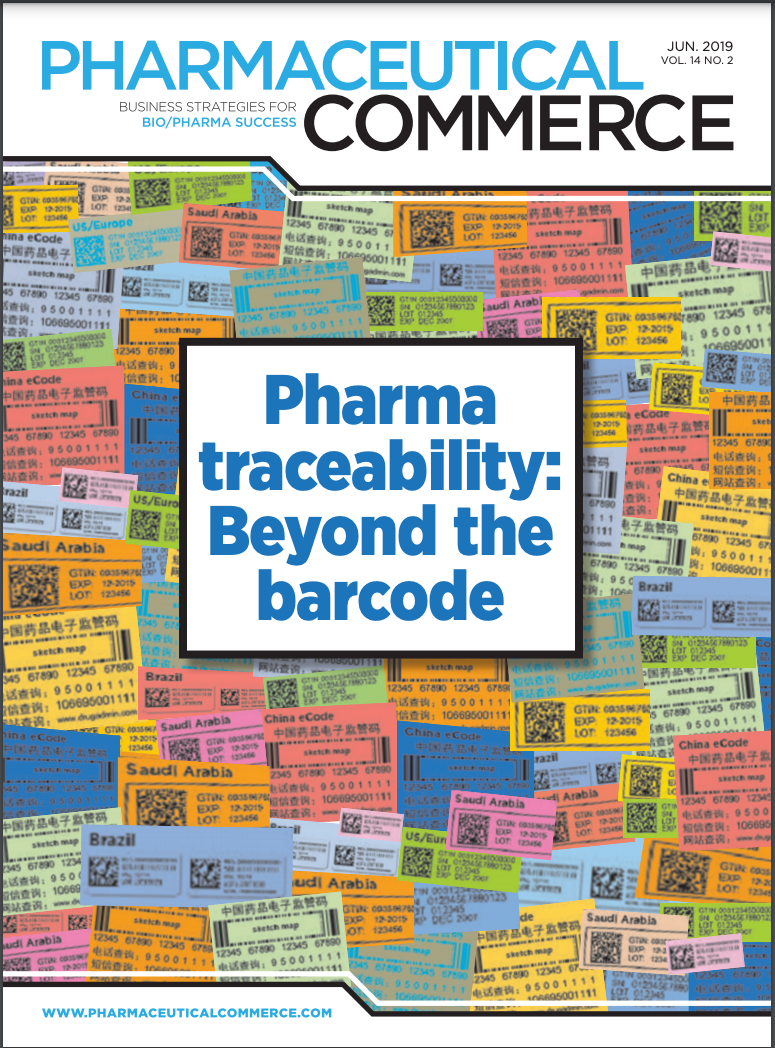Fresh technology enlivens the pharma traceability scene
A couple years ago, all the chatter about meeting the requirements of the Drug Supply Chain Security Act (DSCSA) in the US, and the Falsified Medicines Directive in the EU, was getting manufacturers onboard with putting serial codes on their products. Solution provider were hard at work building out packaging lines with the necessary technology. With the industry having more or less met the November 2018 deadline in the US, and the February 2019 deadline in Europe, one might expect a pause—a sense of letting the new machines run for a while, and getting settled into the new mode of operation.
Instead, solution providers—usually with enthusiastic customers onboard—are pursuing new technologies, and broadening the application areas to which the technology can be applied. Part of the reason for this is the arduous timetable written into DSCSA—there’s a new deadline coming up, in November of this year, for handling saleable returns at wholesalers and other supply chain participants (manufacturers might think that they’re not on the hook for this task, but in reality they will be facing not-insignificant inventory losses, and friction with their distributors, if their data-management systems are not able to quickly verify the integrity of returned products). We’ve written in the past that DSCSA is a highly unusual piece of legislation, in that it not only is very specific about capabilities for the pharma supply chain to develop, but it also has a 10-year timeline, from 2013 to 2023, to implement. Few federal regulatory programs take so long to play out.
The best example of new technology, however, is the growth of interest in applying blockchain (aka distributed ledger technology) As detailed in the overview article "Pharma Traceability", multiple vendors or consortia of vendors are piloting blockchain solutions under the FDA pilot program. Results will be reported late this year and early next year.
Other instances of broadened application areas are bringing traceability to warehouses and distribution centers; combining serial data with product master data; and linking final product identities with the sources of ingredients that went into those products a true “end to end” supply chain. Understanding how serial tracking data will be useful in health systems is a near-term goal yet to be realized.
All this is not to minimize current work. As pointed out in the “interoperability illusion” feature, some very basic coding practices have much room for improvement. Too much effort goes into creating interfaces for one program to speak to another. Given time, this will surely improve.
All this points to a lively, vibrant technology and applications community forging ahead in securing the global pharmaceutical supply chain. Let’s keep it going!

Strategic Trends in Pharmaceutical Manufacturing for Industry Leaders
March 10th 2025This link in the pharma supply chain is undergoing a major transformation propelled by technological advancements, regulatory changes, and evolving market dynamics, requiring industry leaders to adopt innovative strategies in order to remain competitive.
The Digital Transformation Reshaping Hospitals and Medication Management
January 20th 2025Despite challenges surrounding communication overload, drug shortages, and cybersecurity risks, this term is revolutionizing medication management and patient care through the use artificial intelligence and predictive forecasting.